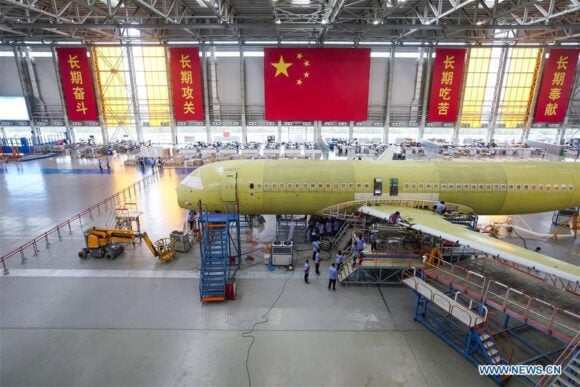
Airbus HQ
Airbus posted disappointing results for the second quarter resulting from supply chain issues and the inability to deliver “gliders” – aircraft that are finished but without engines – during the quarter, due to CFM engine delivery shortfalls. Airbus delivered 306 aircraft in the first half of 2025, including 41 A220, 232 A320 family, 12 A330 and 21 A350 aircraft during the quarter. This compares with 323 deliveries in 2024, a drop of 17 aircraft in a year with strong growth forecasts. Their market leader, the A320 family, had deliveries fall by 29 units in the first half year over year.
Financial Performance Impacted by Engine Shortages
At quarter end, Airbus had 60 gliders in inventory, representing a significant increase to inventory values and a corresponding drop in revenues, as these aircraft could not be delivered. Financially, this translated to lower revenues for the commercial aircraft unit, which reported a decrease in revenues year-over-year to €20.8 billion, a 2% drop from last year. Fortunately Airbus Helicopters revenues, up 16%, and Airbus Defence and Space revenues, up 17%, provided a consolidated revenues increase of 3% year-over-year at €29.6 billion.
Airbus remained quite profitable, despite the undeliverable aircraft in the first half. Corporate revenues were €29.610 billion, and €16.068 billion for the second quarter. EBIT was €1.617 billion for the first half and €1.144 billion for the second quarter. Earnings per share were €1.93 for the first half, and €0.93 for the second quarter. Cash flow from operations was am outflow of (€825), reflecting the increase in inventories from 60 undelivered aircraft.
Production and Aggressive Growth Rates
The commercial aircraft order book was up with net orders for 402 aircraft in the first half versus 310 in the first half of last year. Airbus is continuing to increase production on several models, headed towards a goal of 75 A320 family per month in 2027, a move from 4 to 5 A330 by 2029, a rate of 12 A350 in 2028 and 14 A220 family aircraft in 2026. These numbers appear to be quite aggressive, particularly given supply-chain constraints.
With a target of 820 aircraft for full year 2025 reiterated, Airbus will need to average deliveries of 86 aircraft per month for the last six months of the year to meet its goal for 2025. Given the supply chain (toilets and seats) and engine delays in the first half of the year, this will be a significant challenge.
The company had 60 A320 family “gliders” at the end of the first half, and is expecting additional engine deliveries to complete all of these aircraft by year end. Airbus essentially needs to operate a back-loaded rushed pace for nearly two quarters to make this happen, averaging 76 new aircraft per month plus finishing the 60 “gliders.” That is still a major challenge, especially considering the company averaged completing 38 A320 family aircraft per month in the first half.
The Bottom Line
We remain skeptical of Airbus delivery guidance for H2 of 2025 given supply chain constraints that could continue into 2026 for engines and 2027 for seats and toilets, negatively impacting deliveries of narrow-bodies for the former and wide-bodies for the latter. Backloaded production forecasts entail more significant risk, and based on the Q&A session, expectations are for strongest production and deliveries will be in the last two months of the year.
Airbus is well positioned for success against Boeing, its major competitor. Nonetheless, it will need to execute its planned production to continue its success. With lower volatility in production rates, the company could more effectively compete. Solving supply chain issues is a key priority for Airbus to reach its goals and perform at peak profitability.
Views: 271




